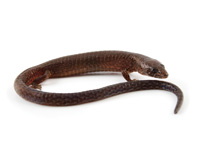Abstract
Pratylenchus quasitereoides n. sp. is described from Western Australia. It is characterized by 2 external incisures in the head cuticle, 4 lateral incisures at mid body, stylet length 17 µm to 19 µm, V greater than 75%, PUS less than 2 body diameters long and crenate tail terminus. Molecular data confirm the separation of the new species from morphologically similar and sympatric congeners. The host range also differs from P. teres as well as the sympatric P. neglectus, P. thornei and P. penetrans. Reproduction rates on oat and lupin differed between the new species and P. neglectus. The species was originally described as P. teres, but the species concept of P. teres now encompasses a considerable range of different attributes spread over two described subspecies and three variant populations. The new species differs from all these subspecies and populations in at least two characters. It differs from all populations of P. teres teres most notably in having four rather than 6 lateral lines and a more posterior vulva. It differs from P. teres vandebergae in having a longer stylet and longer overlap of the intestine by the oesophageal glands. Characters which can be used under low magnification to separate the new species from the closest sympatric congeners (P. thornei and P. crenatus) are discussed.

